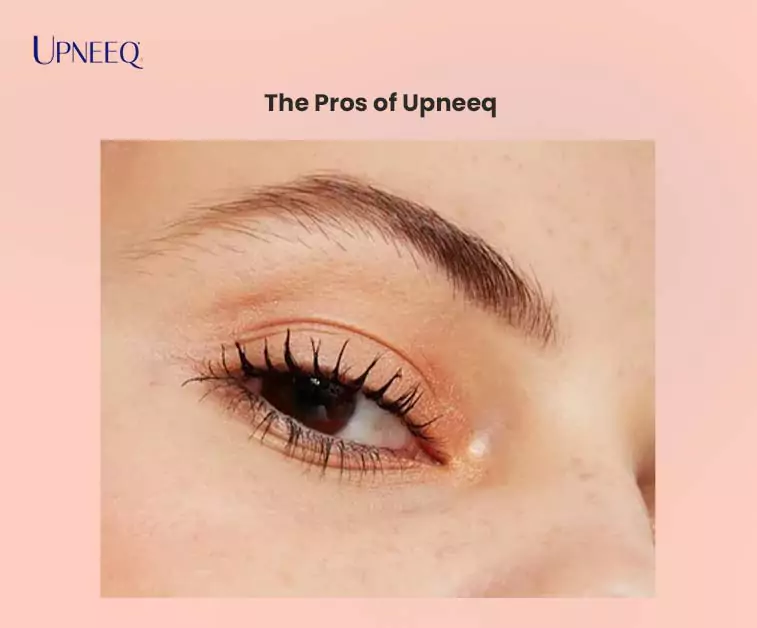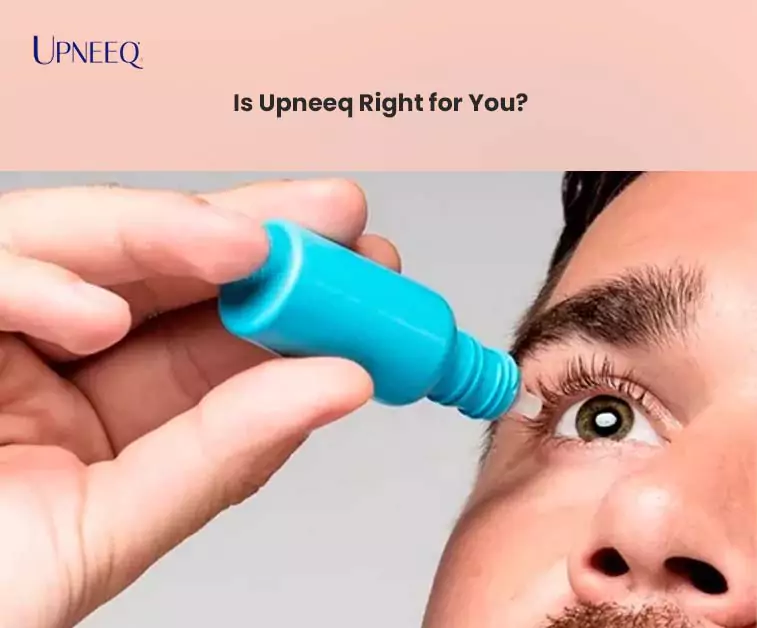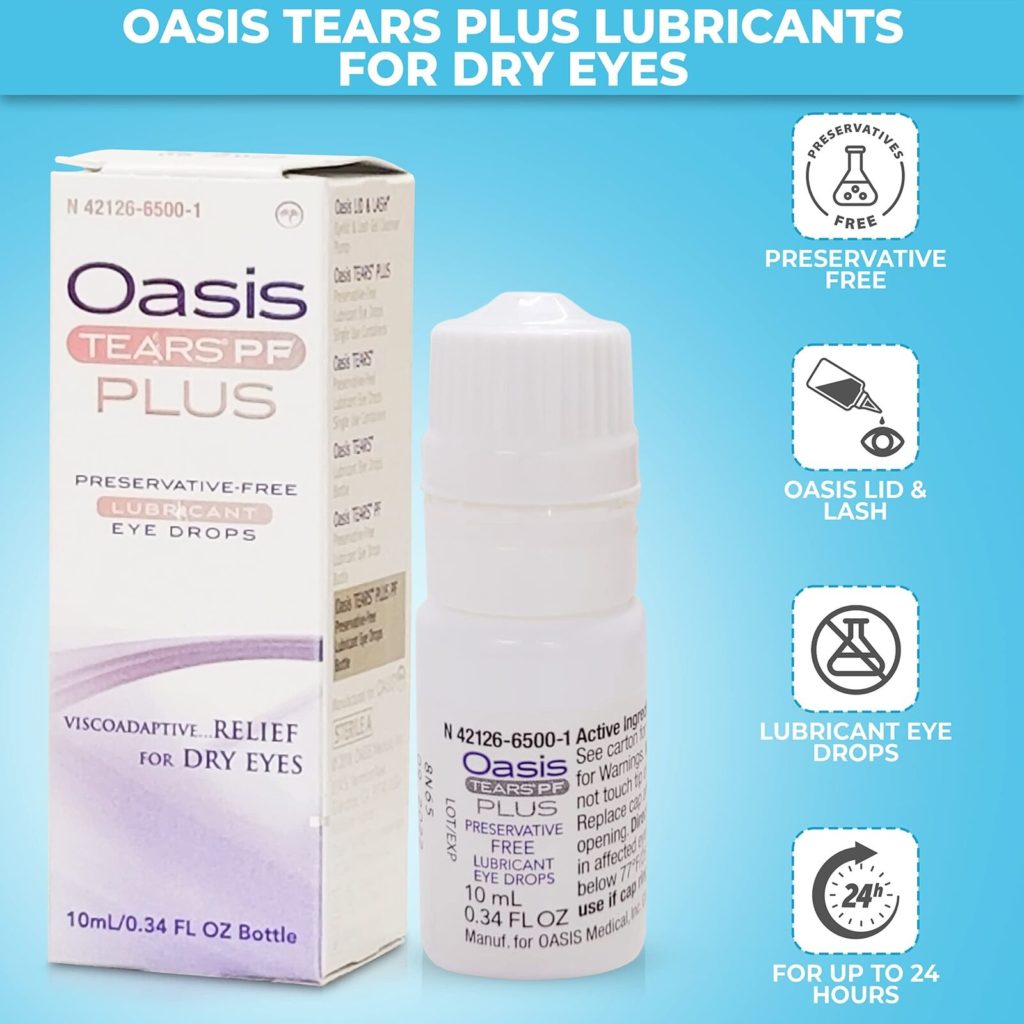Upneeq, an ophthalmic arrangement containing oxymetazoline hydrochloride, has blended substantial interest and dialogue within the ophthalmology community, capturing the consideration of patients and healthcare suppliers. This modern pharmaceutical targets ptosis, a predominant condition with a droopy upper eyelid. Like all therapeutic interventions, Upneeq comes with its claim points of interest and impediments, requiring careful thought when starting its utilization. Considering the patient’s medical history, treatment objectives, and preferences, the choice to utilize Upneeq should be made after consulting a healthcare provider.
Key Takeaways:
- Upneeq uses oxymetazoline hydrochloride to raise the upper eyelid and restore ocular symmetry. It provides a cutting-edge, noninvasive treatment for acquired blepharoptosis.
- Ptosis sufferers can look better and feel better about themselves because of Upneeq’s quick start of action, ease of at-home administration, and few side effects.
- When starting treatment for mild to moderate cases of ptosis, it is essential to carefully examine the transitory effects, economic implications, and limited efficacy of Upneeq in severe cases.
Let’s Explore What Upneeq is and How it Works
Upneeq is an innovative visual treatment designed to alleviate acquired blepharoptosis, characterized by drooping upper eyelids due to nerve damage or age-related muscle weakness. As a sympathomimetic medication, its active ingredient, oxymetazoline hydrochloride, elevates the upper eyelid by activating alpha-adrenergic receptors to contract the Mueller’s muscle, restoring the eyes’ natural and symmetrical appearance.
The Pros of Upneeq:

Noninvasive Alternative:
One of Upneeq’s most critical benefits is its noninvasive nature. Unlike intrusive surgical strategies like blepharoplasty, which requires downtime and entry points, Upneeq offers a direct topical approach for treating ptosis.
Comfort and Availability:
For people with mellow to direct ptosis who might not be great candidates for surgery or would or may not have it done, Upneeq offers a comfortable treatment elective. Its openness as an ophthalmic arrangement minimizes the requirement for visit clinic visits by making at-home organization essential.
Quick Onset of Activity:
Another noteworthy advantage of Upneeq is its fast start of activity. After application, patients can usually raise their eyelid height in 5 to 15 minutes, which can help with visual blockage and tasteful issues related to ptosis.
Made strides in Symmetry and Aesthetics:
Upneeq effectively lifts the upper eyelid, reestablishing eye symmetry and progressing the appearance and usefulness of the eyes. Those affected by ptosis may see an advancement in their quality of life and sense of self-worth.
Negligible Side Effects:
Clinical examinations have revealed that Upneeq contains a great security profile, with few reports of systemic antagonistic impacts. Most patients discover Upneeq to be well-tolerated because of the mostly direct and transitory nature of common side impacts, such as redness or disturbance of the eyes.
The Cons of Upneeq:

Here are some disadvantages of Upneeq:
Transitory Impacts:
Upneeq gives fast lifting of the eyelids; in any case, the results are transitory and can last six to eight hours. Subsequently, regular daily application would be required for long-term enhancement, which might cause a few patients distress.
Cost Considerations:
With numerous unexplored medications, Upneeq’s cost may be restrictive for numerous patients, particularly those who need adequate protection or are money-related. Concerns about its almost reasonableness may ruin its far-reaching usage, especially in regions needing healthcare assets.
Restricted Viability in Extreme Cases:
Upneeq works well for gentle to direct cases of ptosis; it might not work as well for inherent or extreme cases of clutter. Patients who require surgery or distinctive treatment modalities because of considerable eyelid droopy or fundamental anatomical issues may see little results with Upneeq alone.
Potential for Tachyphylaxis:
Long-term utilization of sympathomimetic drugs, such as oxymetazoline hydrochloride, may cause tachyphylaxis, a condition in which the body steadily loses its reaction to the medication. Due to this decreased viability, a few patients may require dosage changes or treatment cessation.
Adverse Reactions and Precautions:
Even though Upneeq is well-tolerated, it has potential dangers. Patients with certain therapeutic conditions, such as cardiovascular disorder, hypertension, or hyperthyroidism, may be at an expanded hazard of antagonistic responses due to the systemic assimilation of oxymetazoline. Also, due to the chance of sedate intake, caution ought to be worked out when utilizing Upneeq in combination with other sympathomimetic agents or monoamine oxidase inhibitors (MAOIs).
Is Upneeq Right for You?

Transform Your Vision with Upneeq at Beverly Hills Eye Care
Experience the transformative benefits of Upneeq for acquired blepharoptosis at Beverly Hills Eye Care. Our experienced ophthalmologists specialize in personalized treatment approaches tailored to your unique needs and preferences. Schedule a consultation today to discover if Upneeq is the right solution for you and embark on your journey towards revitalized and rejuvenated eyes. Your vision is our priority.
Exploring FAQs: Pros and Cons of Upneeq
Is Upneeq suitable for all types of ptosis?
Upneeq is most effective for mild to moderate cases of acquired blepharoptosis. Severe or congenital cases may require alternative treatment approaches.
How often should Upneeq be applied?
Upneeq is typically applied once daily, as needed. However, individual dosing may vary depending on the patient’s response and treatment goals.
Does Upneeq have any adverse effects?
Although Upneeq is generally well tolerated, a few people may develop moderate side effects that go away, like redness or irritation in the eyes. Should you encounter any adverse reactions, speak with your healthcare professional.
Can I take Upneeq along with other medications?
When taking Upneeq with MAOIs or other sympathomimetic drugs, care should be used since there could be a higher chance of medication interactions. It is always advisable to speak with your doctor before mixing drugs.
Conclusion
Upneeq may be a successful, helpful alternative for many individuals with mild to direct ptosis who are trying to find a noninvasive alternative that works rapidly. Alternative techniques, such as surgery or combination treatment, may be more suitable for people with more severe or complex cases of ptosis.
Upneeq may be a potential treatment for obtained blepharoptosis that provides a practical and proficient way to raise the eyelids. By knowing the benefits and disadvantages of this method, patients and specialists can guarantee the leading conceivable comes about and joy on their travel toward refreshed and healed eyes.





